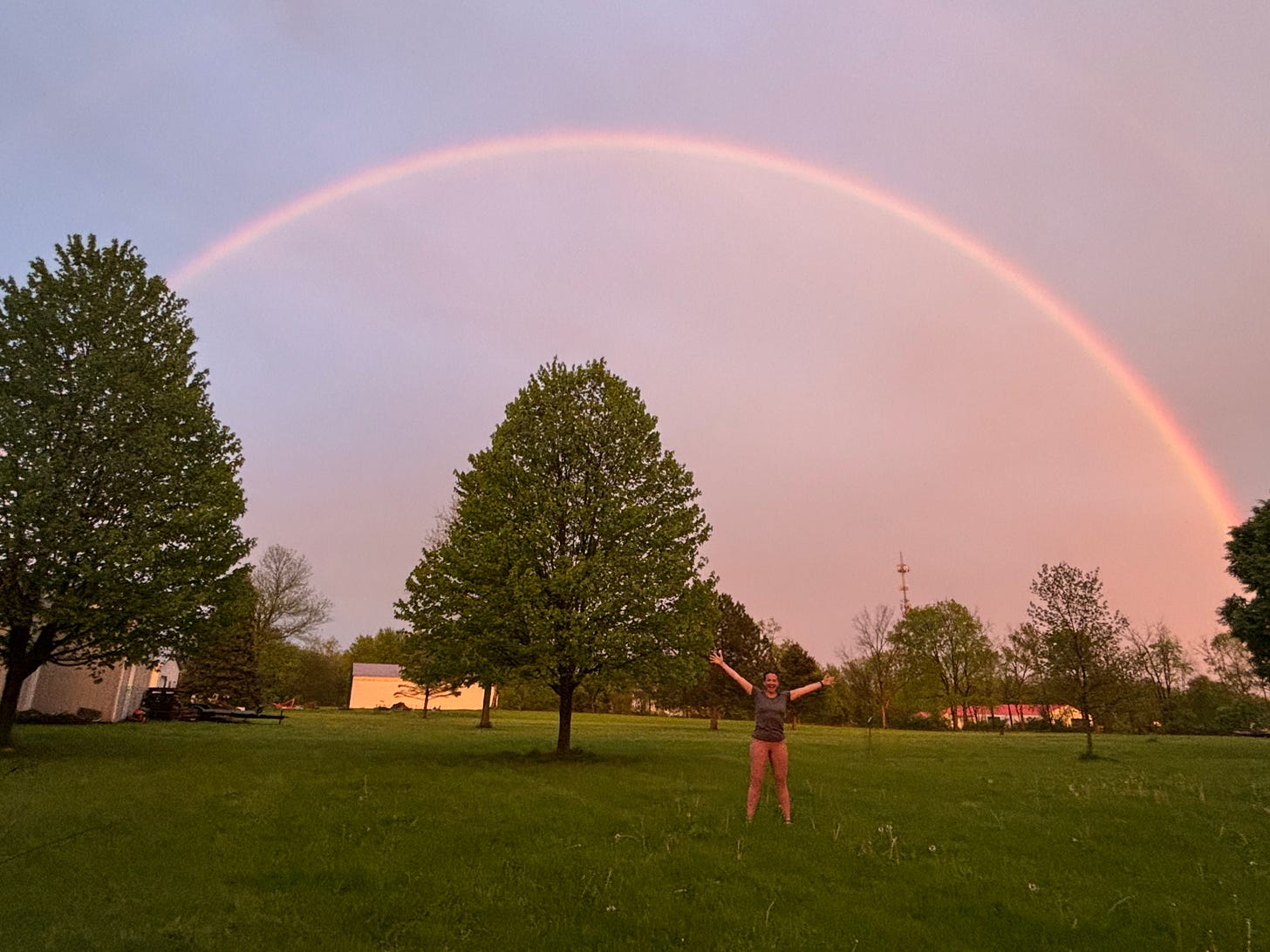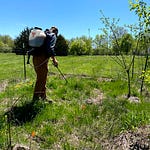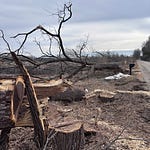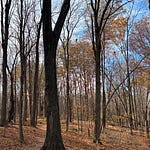This is the newsletter version of Sara by the Season, where I explore what is piquing my curiosity as I try to lean into nature’s wisdom and rhythms. You can listen to me read you the newsletter by hitting play above - or you can click the little link above and to the right to play in your favorite podcast player.
If you know someone who would like this sort of thing, I’d be so grateful if you would share it.

There has been this thing going around on Instagram lately. I think it’s just women, but they share some really vulnerable things that they are afraid to tell anyone else under the heading of “Instagram isn’t real.” Jen Hatmaker is one of the bigger names I’ve seen following the trend, but I first saw it among some of the smaller accounts I follow (examples here, here, and here). I eat these things up. I can’t help myself. In some cases, I feel a little gross afterwards, but then when another one comes across my feed, you can bet your ass I’m reading every last bit of it.
As I started thinking about what was making me feel a little bit ick, I couldn’t put my finger on it. Even as I’m writing this now, I’m having trouble naming it. Does it bother me? That seems like too strong of a word. Am I jealous of these people? Not really, or at least not about their vulnerability posts. Do I relate to many of the things they’re sharing? Yes, and it sometimes even makes me feel a little bit better after reading about someone I respect who has some of the same insecurities I do (although I feel like this very clearly can veer off into judgemental territory where I think to myself, “well at least I’m not insecure about that!”). I think vulnerability is great. I think, in many cases, we need to be more vulnerable with each other.
But.
I’m not sure what we’re doing on social media is actual vulnerability. A friend and I recently have been having this ongoing discussion that arose out of this post, but now has turned into so many tangents that I don’t have any kind of category for it1. In one of those conversations, she asked if Millenials are stuck performing vulnerability instead of actually doing it. Many of these people doing this vulnerability challenge on social media are not Millennials, so I’m wondering if social media has generally thrown a ton of us into this collective delusion about what is real and what we’re performing2. In 2010, Brené Brown’s TED talk on the power of vulnerability goes viral, it resonated with us, and we decided that we needed to get an A++ in vulnerability, so we started sharing every little thing on social media, with our friends, husbands, parents, etc.3
But even the queen of vulnerability herself, Brené, warns us about being careful with whom we’re vulnerable. As I wrote about more in this newsletter, Brené counsels, “Our stories are not meant for everyone. Hearing them is a privilege, and we should always ask ourselves this before we share: ‘Who has earned the right to hear my story?’” I’m stating the obvious when I say that, if you’re putting some of your most vulnerable truths about yourself on social media, the people reading them have not earned the right to hear your story because you don’t know who is even reading them.
Speaking of Brené, she interviewed Esther Perel at South by Southwest, and Perel called this phenomenon “artificial intimacy.” To define this emotional kind of AI, Perel said [emphasis mine]:
So you’re physically there…but are you emotionally and psychologically present. In both of these situations, I can’t really resolve, are you there? Or are you not there? This is what’s happening in many of the interactions at this moment. And that creates a particular kind of loneliness. It’s not the loneliness of being alone, it’s the loneliness of being with people next to whom you should not be feeling lonely, but in fact, you do. That’s AI, my emotional AI, is the consequence of living in a contactless world where there is very, very little friction…But if everything is supposed to be polished and glossed, then you don’t get to experience experimentation, doubt, friction, conflict that are part of what my friend Terry Real calls, fierce intimacy. And then you start to have all these experiences of artificial intimacy.
She goes on to use a really clarifying analogy that I think so many of us can relate to:
Modern loneliness masks as hyper-connectivity. I can have 1,000 virtual friends, but nobody to feed my cat, nobody to ask to go and pick up a prescription at the pharmacy, but 1,000 people who are giving me likes and dislikes, and all kinds of things that are now becoming the foundation of my self-esteem. And that’s a different kind of loneliness. It’s not about being physically alone, it’s about being misunderstood, unseen, rejected, ostracized, all of that.
So we’re out here performing vulnerability or to use Perel’s term, artificial intimacy, but we don’t have anybody that we could call in a pinch to take our dog out. We don’t understand why, when we’re out here getting an A++ in vulnerability and authenticity on the internet4, we’re still or increasingly lonely or dissatisfied or depressed or full of rage? Brené says that "Vulnerability is the birthplace of love, belonging, joy, courage, empathy, and creativity." I’m pretty sure most of us desire more of all of those things in our lives, so why isn’t vulnerability delivering on its promises?
I know it sounds like it, but I’m really not trying to dog Brené. She told us that her research showed that vulnerability unlocked all sorts of the qualities that we want more of in our lives, so we went after that vulnerability at a hundred miles an hour, determined to overachieve at vulnerability. But vulnerability isn’t something you achieve; it is something you practice, with safe people, in safe places. Real vulnerability and intimacy are a two-way street. As Perel says, they require some friction, failure, mistakes, and repair - none of which can happen with a post on Instagram. It requires time and trust because it takes both to determine what feels safe in your specific body in this specific season. It cannot be rushed, and it should be practiced mindfully and intentionally.
But it’s so much easier to share a few of my deepest truths in a few slides on Instagram and get praised for it. Trust me, I get it.
It also becomes a sort of cycle because these posts get accolades and likes - “I love your vulnerability!” “You’re so real!” “You’re so transparent!” So we do more of it, emptying out ourselves with practical and literal strangers on the internet.
And it isn’t that I want us to go around being fake on social media; it’s just that I don’t think this is true vulnerability and so it can’t deliver on the things we want and that we’ve been promised. And because we think we’re being vulnerable on social media, when we’re actually vulnerable in real life, and we don’t get immediate returns in the forms of likes and accolades from it, we either criticize the other person or criticize ourselves for doing it wrong. We’re setting ourselves up for even more loneliness in our actual, real life relationships by judging them based on what social media feels like and the types of stuff that it rewards.
Social media has the potential to connect us, but I really think most of the potential it had has been almost entirely hijacked by capitalist interests at this point. I do think that vulnerability is the birthplace for many of the good things Brené’s research demonstrates, but I think we’re out here performing a dollar store version of vulnerability (as my kids would say) and left confused when it doesn’t deliver. Authentic vulnerability requires so much more from us, and we aren’t experiencing the fruit that authentic vulnerability promises because we aren’t first taking on the hard, messy, sometimes draining, always time-consuming, often inconvenient, real-life practice that it requires.
Scattering Seeds
I’m always finding stuff that supports the thesis of the book I’m writing on the benefits of leaning into nature’s wisdom, so I thought I could start sharing those links and things here with all of you in hopes of some of the seeds I share germinating into something beautiful at your place.
More Esther. Esther Perel has been talking about this a lot - on Brene’s podcast and Ten Percent Happier and Kelly Corrigan Wonders - all of which are worth listening to if you want dig deeper. This is a little off the topic above, but I also really appreciated this talk from Esther from 2018.
May Day/Beltane. Last week, we celebrated Beltane or May Day. Beltane is the older, Celtic version that celebrates the halfway point between the spring equinox and summer solstice. When Christianity came to the British Isles, Beltane became May Day. At our kids’ school, they associate May Day with Mary, the mother of Jesus and crown her with flowers. I went to the celebration because the eighth-graders had a special role in the ceremony. On the way to school that morning, I told the kids that in addition to it being May Day, it was also Beltane, a much older ritual that has always been associated with fertility, the official beginning of summer in the northern hemisphere, and that it was traditionally a time when the synergy of masculine and feminine energies was celebrated. I told them about this podcast I had listened to with Sylvia V. Linsteadt, in which she told the following story:
I saw on that journey, how Mary was kind of holding all of these older female mysteries in her skirts, like almost like under her skirts. Like, wherever she was, she took on these different names and these different faces that kind of integrated earlier, sacred beings in a really beautiful way, not in a colonial way at all, but in a really kind of beautiful braiding.
And so that kind of opened something in me to her because I think what I noticed, shortly thereafter, when I was living in Crete was that, you know, I was visiting, and doing research and all these different Minoan sites of Bronze Age ruins. And I always felt I could kind of feel and imagine a lot in those places. And I would imagine, you know, the kind of spiritual practices that people might have been doing in them. And I was doing a lot of research about who some of these female divinities might have been for Cretan people. But what I noticed when I was living there was that the place where the female divine was still alive was no longer in those ruins, but in the little chapels—to the Panagia to the Virgin Mary, you know, the Greek Orthodox Christian Mary. And there are certain places especially like cave chapels, where you know that she's been worshiped in one form or another forever in that cave and now Mary is holding that energy. And, I remember, one cave shrine that I went to where the icon of Mary was so heavy with these tamata, the little silver offerings that you bring and tie to these icons of Mary asking for healing. And she was just absolutely covered with them and it just made my hair stand up and I could feel this aliveness, she still had this presence and this kind of sacred power in her.
I love how Linsteadt describes Mary as a kind of feminine holder for the divine feminine forces that had been pushed underground by the patriarchy and colonization. I told the kids that even though we were on our way to a Christian ritual, that we were connecting with much older ancestors by celebrating this cross-quarter day. I told them that I like to think that the divine feminine has a little trickster energy - that she has still figured out how to “get hers” even in the very patriarchal institution of the Catholic church.
They mostly rolled their eyes, but maybe it’ll sink in at some point.
Here’s to practicing vulnerability instead of performing it in the season ahead!
Sara
My absolute favorite kind of conversations -- to be clear!
Obvious answer here is yes, of course it has.
I think this has happened with other things we’ve decided are good, like wellness, boundaries, social justice, among others - and I might write about that at some point.
I would question whether anything on social media truly qualifies as authentic? I don’t know the answer. It certainly can’t show the full picture.












Share this post